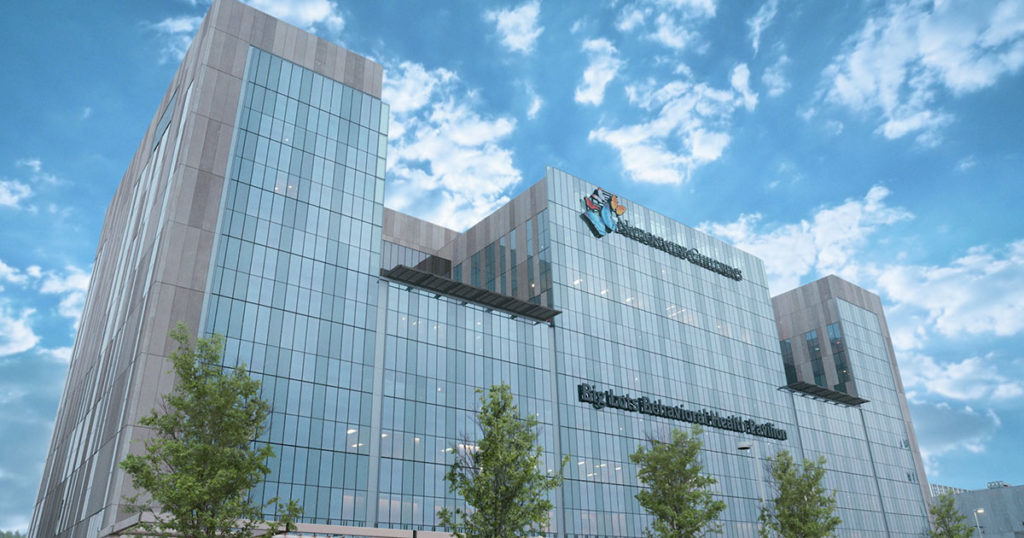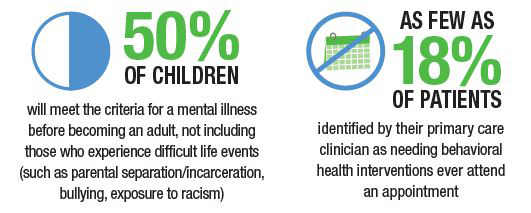One Year Reflection: Behavioral Health Pavilion Adds to Industry-Leading Model of Care During Pandemic
One Year Reflection: Behavioral Health Pavilion Adds to Industry-Leading Model of Care During Pandemic https://pediatricsnationwide.org/wp-content/uploads/2021/04/W234939-Talent_BHP-SM-images-1200x630-FB-1024x538.jpg 1024 538 Kaitlin Hall Kaitlin Hall https://secure.gravatar.com/avatar/858721b8e3a2fd6a73c58de8d619b90d?s=96&d=mm&r=g- April 02, 2021
- Kaitlin Hall

The full impact of COVID-19 on children’s mental health likely won’t be known for some time. But even before the pandemic, pediatric mental health was in a national crisis, with one in five children living with a mental illness, and suicide the second leading cause of death for children 10 and older. That means the pandemic propelled the country into a crisis within a crisis. As a result of COVID-19, behavioral health services across the country had to pivot quickly over the last year to address current and future needs. From infrastructure changes to telehealth, prevention and research, Nationwide Children’s Hospital continued to build upon its leading model of care throughout this time.
The Behavioral Health Pavilion Difference
From 2011 to 2015, more than 13 million youth (ages 6-24) turned to the emergency department (ED) for a psychiatric concern, according to a 2019 publication in Pediatrics. While EDs should always be an option for young people in crisis, they are not often the best care solution as they are not outfitted to meet the specific needs of this population.
Recognizing the exceptional need for more personalized behavioral health services and programming, Nationwide Children’s opened its doors to the largest behavioral health treatment and research center on a pediatric campus in the United States last March – just days before COVID-19 caused widespread shutdowns. At the time, they had no idea the impact the building would have in its first year alone.
At nine stories and 386,000 square feet, the Pavilion uniquely integrates acute behavioral health services with intensive outpatient programs and research. One of the main features of the Pavilion is the Psychiatric Crisis Department, an emergency department for behavioral health. The Psychiatric Crisis Department allows staff to evaluate, treat, refer or admit children in a more patient-friendly environment. It also provides more time for evaluation and triaging children to the appropriate level of care.
With the number of crisis assessments for mental health concerns up by close to 15% in the second half of 2020 compared to 2019, David Axelson, MD, chief of the Department of Psychiatry and Big Lots Behavioral Health Services at Nationwide Children’s, said it is hard to imagine what the last year would have been like without the addition of the Pavilion and its various clinics. Throughout 2020, the Psychiatric Crisis Department had approximately 4,600 visits, which took significant pressure off the hospital’s main ED and greatly improved care. Most of the kids evaluated in the Psychiatric Crisis Department were connected to an appropriate level of care that did not include inpatient admission, showing that this model works.
Pivoting During a Pandemic
When the pandemic first hit, many people were uncomfortable visiting the hospital or other health care settings. To help bridge the gap in care, Nationwide Children’s pivoted to telehealth for outpatient care. They saw more than 160,000 total behavioral health telehealth visits from March 16 to Dec. 31, 2020, 51% of all hospital-wide telehealth visits in that timeframe.
“The rapid expansion of telehealth at Nationwide Children’s has transformed the way we deliver services to improve access and expand capacity. We are able to leverage telehealth to connect with children in their homes, schools or primary care offices to overcome the barriers related to social determinants of health,” said Ujjwal Ramtekkar, MD, medical director of Telehealth and Virtual Care.
Virtual care became integral to continue providing prevention programs, a key area of focus even before the pandemic. School-based therapy and parenting offerings shifted to an online format, placing additional emphasis on helping parents and educators deal with the pandemic.
“Our community work is intentionally designed to support local providers and agencies to address more mental health conditions at less intensive levels, rather than refer to us,” said Axelson. “We’re also hoping that our comprehensive community approach will reduce ED use for crisis patients and reduce readmissions.”
Public education is another important pillar to their efforts around mental health. In 2018, Nationwide Children’s started the On Our Sleeves® movement to break stigmas and educate families and advocates on children’s mental health. During the pandemic, education resources were tailored to support parents with coping strategies, such as starting conversations, routines and working from home.
The Future
Despite the many twists and turns since the opening of the Pavilion, one thing is certain – the Behavioral Health Pavilion and the learnings it has provided over the last year mean Nationwide Children’s is poised to take on whatever comes next.
About the author
-
Kaitlin Hallhttps://pediatricsnationwide.org/author/kaitlin-hall/
- Posted In:
- Clinical Updates
- Features






